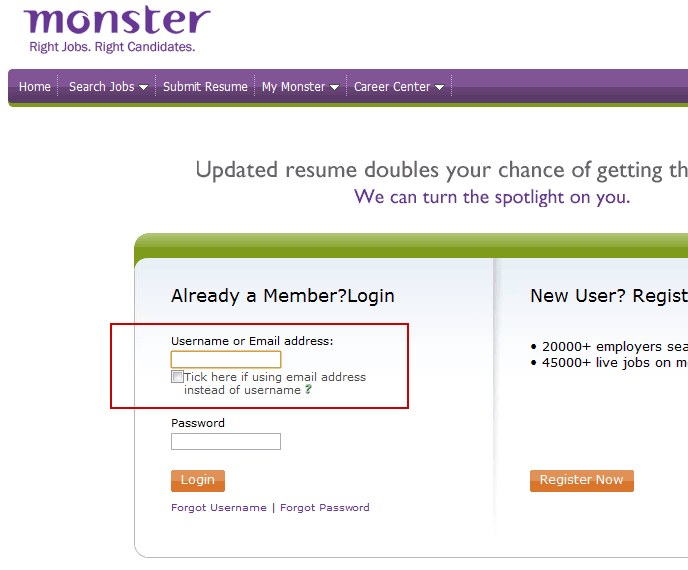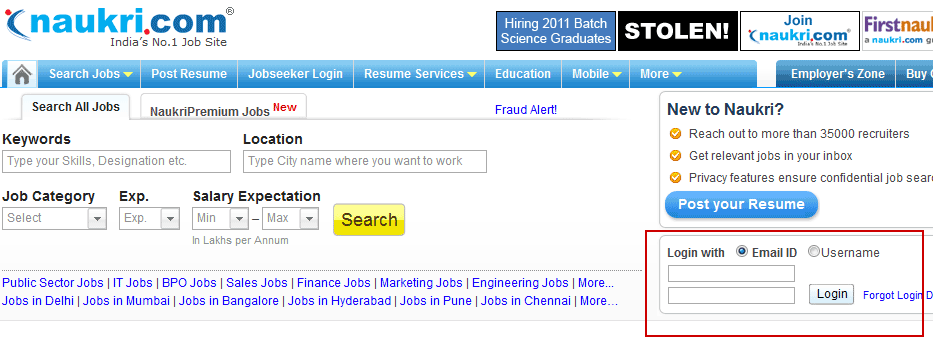Why Indian Languages have failed so far to create much desired impact on Internet?
With due respect to companies & entrepreneurs working in Indian /Indic languages – let me put practical thoughts on Indian Languages proliferation in Indian Online industry. Technology is nice, great infact – we love it when we type in English and the text gets converted to an Indic language. Technology does makes us say – WOW!, but it is not enough to assume that millions of Indians will adopt it and it would bring about an revolution in Indian Internet Industry.
Revolution in Indian Internet Industry will be when about 100Mn Internet users in India grows to 500Mn (not in next 20 years, but in next 3 years) & about 1XX Mn Mobile Internet users grow to 500 Mn (not in next 10 years, but in next 2 years). Hope the revolution of this sort does happen – but will acceptance of Indic languages lead to it – answer is definitely NO! The ecology for this change is simply non-existent in India today; and is far from created.
Having worked in the Internet domain – we have repeatedly heard that Indian languages to be the next thing. These predictions actually looked more like “me-too” product offerings – thats worked-in-US will work-here-too. Because China has Baidu does not mean we need one!
Coming back to Indic languages, in my opinion – the languages space has been highly misunderstood. We saw several efforts in this direction over years:
- Rediffmail introduced feature to send and receive emails in multiple Indian languages many years back. However the usage of this service is not more than 1% of overall service. Ajit Balakrishnan, CEO, Rediff.com said earlier – “Lets not assume that (Indian) users want Indian Languages!”
- Microsoft started offering its Windows Operating System and MS Office Suite products with Indian language versions since last few years. The adoption rate of same is questionable – to my best positive guess it will be still <0.5% of overall installations.
- Keyboards / Input devices with multi-lingual keyboards were at one time were hailed as innovations to drive computing to rural India.
- Indian fonts also saw its own best days when they were introduced to the market.
- Bi-lingual (English+Hindi) mobile phone keypads were once a rage. Nokia introduced a series of phones and around same time we saw a huge interest in mobile applications working on Indian languages
Most of these services/launches were well received, were thought and perceived to be game changers. Maybe at times even I did think in same way – but while I have studied this space and have interacted with few wise people in Indian & International scene – Can strongly put forward the conclusion that Indian Languages will NOT make a mark in Computing, Mobile or Internet domain. It will not happen very soon – the ecology for such change to happen in India does not exist.
Here are of fews considerations that makes me form such strong opinion and conclude on absence of ecology favoring Indic languages adoption:
Diversity of India:
While this is what makes us proud of India – this is one of the strongest reasons why Indic languages have failed to make a mark.
Consider emerging markets like-
- Brazil: Over 99% of population speaks in Portuguese
- Other Central & South American countries like Argentina, Venezuela, Peru, and many other countries have Spanish as the official language with over 90% population in these countries speaking in Spanish.
- Similar with French – it is widely accepted in many European countries as official language.
- Consider China – it is as diverse as India, but all most popular versions of Chinese languages are based on standardized version of Mandarin (based on Beijing dialect)
Consider India – while Hindi is leading official language, but no single language has adoption across the country. State governments have endorsed respective regional languages as official, Hindi failed to find the common ground – but English did!
How Innovation starts in Local Language:
Take market like China – The innovators, the early adopters, the influencers, the decision makers, the entrepreneurs – all of them DON’T KNOW English! So innovators developed softwares, websites, products in Chinese; early adopters used Chinese products and so did the influencers, decision makers, and everyone else in China.
Take India – we know our Mother Tongue (our Mother Tongues are different) + we know English!
English is Aspirational language!
English is an aspirational language. Nothing official about it!
It can be confidently said that the percentage of users who will read/write/speak English language will keep growing for next 50 to 100 years. The same cannot be said about Indic languages.
How new users are learning computers:
For applying to government jobs that involve computer related work, few state governments in India have provided guidelines / benchmarks or minimum criteria based on examinations/programs acknowledged by them. Once such program with examination is MS-CIT for Maharashtra Government.
Had a chance to visit once such center – the communication with students may be in local language – however many users prefer to give examination in English language and during their classes learn computers that have English versions of Windows / Office and other software applications.
Indian languages are complex; Do not follow standard / global script:
One of the most favoring factor for languages like French, Spanish, Portuguese, etc was the fact that they followed alphabets from English language (ABCD…XYZ). No additional fonts, hardware or input devices were required to be created when uses adopted computers usage in these languages – both reading and writing.
In contrast, all languages in India do not follow standard script and are very complex to input and still be grammatically correct. To a small extent, another disadvantage is – like English we cannot drop vowels (AEIOU alphabets) to make shorted and communicable form of any Indic language, an convenient SMS lingo of Indic languages could not be developed.
Even Devanagari script is very complex to be standardized for its multiple languages on a input device like keyboard; even if it were – all languages in India are not based on Devanagari; while in China most Chinese languages have standard Mandarin script.
Internet was built on Content; Indic languages lacked adoption by early movers:
Internet was built over years – the most popular activity till date on Internet has been creation & consumption of content – through content sites, social content, or services & products that communicate through a content (language). While content was created in other global languages based on English alphabets from early days of Internet – it took a long time before content in Indian languages started appearing on Internet. By the time ability to create content in Indian languages was available – English had taken a mighty lead in its adoption as Internet’s mother-tongue for India.
In early days of Internet in India, most early adopters had English as first/second language. It made more sense for these users to adopt English language than create content in Indian languages as content was readily available elsewhere to. Most early and popular Indian websites too focused on creating content in English.
Even if they were to adopt Indic languages – the question will always be – which one to start with?
Indian Languages are great for Consumption; Not for creation!
As users we consume all regional languages through other Media – Television, Radio, Newspapers. Its very easy to consume on traditional media and the ecosystem exists for – content (TV programs, news content, audio content for radio), publishers (multiple TV channels, news papers & radio stations) and advertisers (promoting products in Indian languages). There is huge amount of content produced, audience availability & consumption, and advertiser interest.
Indic languages are great for consumption; not for creation! Ask yourself –
- How many times have you sent an official email in Hindi? No business may deny communication in lndian language if it gets you more business – but did you send?
- How many times have you sent an email to an friend in any Indian language?
- How many times have you composed and sent (not forwarded) an SMS in Indian language?
- You may talk with your friends in any language – like Hindi, Telegu or Bengali – but did you write email to them in that language?
No Rewards for creating Content for Publishers
Even if large publishers now take efforts to create content in local language – the cost & economics associated with this may not justify the efforts. The questions to ask would be –
- Is there audience that would accept content in Indian language. If there is – are they online today?
- Are advertisers willing to include these in media buying plans, develop creatives in multiples of Indian languages – would the right advertisements be displayed to correct audience?
- How will they get traffic? How will they optimize for SEO? If they post an message on their Facebook fan page – will the users reply back in local language or in English?
- The monetization – how will they?
Monetization for local language content publishers:
Should we charge consumers to access our content in local Indian languages – that will not work. The debate if content should be free or paid has been ongoing since we have known – its best concluded that content should be free as it has been.
Coming to online advertising opportunities, agencies and publishers need to take extra efforts if they have to cater most of the Indian languages – the time and effort required in doing so may not justify the returns on many metrics.
Even current large publishers like Yahoo, BBC, etc having local Indian versions of its service – feature display advertisements in English itself and have comparatively less advt spots than their English versions. Many small and medium publishers will rely on Google Adsense for revenues – but Google does not do any wonders here. No robust technology available to content sense Indian languages – and even if it were available – there are no advertisements available in languages to match up and show them in relevance. Fill rates for advt-spots would been lower and with fewer revenue generation options – small publishers will think twice before putting efforts on creating Indic language content.
Take a look at large portals in Brazil, France, Spain or China – the ecology exists with an huge array of content providers, publishers and advertisers communication through respective local language.
Literacy Rates of India:
While most predictions about Indian languages are made that it will increase penetration of Internet users in India – we forget to acknowledge the fact that there still exist an huge population that is illiterate. Unfortunately, 35% of world’s illiterate population is in India.
As of 2007, India’s youth had literacy rate of 82%, while that of Chinese youth was 98%. Literacy rates are based on an individual’s ability to read and write, not on his ability to understand or use computers! Hence the addressable Internet market in India for any language will be far lower than the entire population.
Our Generation is learning to give up Indian Languages:
Few factors around us might be making us give up our inclination towards Indian Languages. One of the strongest is influence on Cinema / Bollywood – Indian audience is bombarded with promotions of movies close to its release date, most promotions today feature names of Indian Movies in English characters!
Did you notice that – Ghajini, Dabangg, Golmaal, Rajneeti, or many latest blockbusters from Bollywood came out with posters/promotions focusing with name of movie only in English (or Hinglish). And so are television programs and contests .
While sending SMS’s even to our friends – its easier to type a local Indian language in English (Hindi + English = Hinglish), not just for Hindi but for all languages.
We are slowly learning to give up Indian Languages when it comes to usage on Mobile or Internet.
The Litmus Test for Indian Language Usage !
Amitabh Bachchan on KBC (Kaun Banega Crorepati) asks viewers a question for winning 1 Lac, users are expected to send SMS KBCQ followed by options A, B, C or D.
One fine day if he declares that only SMS in local languages will be accepted. How many users you think will send the answer as (केबीसी क्यू क, ख, ग, घ) or any other local Indian languages? Will there be a SMS responses go up or fall drastically?
For a simple message like this – there will be multiple variants in multiple languages. Try composing this on your phone in Hindi or in your own mother-tongue. Now – Did you get my point about Indian Languages?
Concluding Notes:
There is definitely a pain area that has to be addressed here knowing the potential that can be unleashed will be tremendous. The challenge that needs to be addressed is not about creating a tool to translate content to Indian Languages or simplifying the creation in Indian Languages – but it is about creating an ecology that enables creation, consumption and monetization of Indian Languages!
Notes from above article:
- Indian languages are based on complex scripts – it may be easier to read content, but not to create it.
- There is no common ground for one Indian language – hence English takes a lead and will continue to.
- Although there are technology innovations that lets one type in English and then auto-translate in a local language – but the minimum criteria to use the same is knowledge of English!
- For Indian languages – it would definitely be the Mobile Story! Mobile Penetration in India is already about 50% of entire population – is the rest 50% a addressable market is questionable – even the new mobile operators in India have to prove themselves.
But with Indian youths – 82% literacy rate and high mobile penetration already are key factors. A solution for proliferation of Indian languages usage needs to be out before English becomes the De facto communication medium and an lost opportunity for Indian languages!


